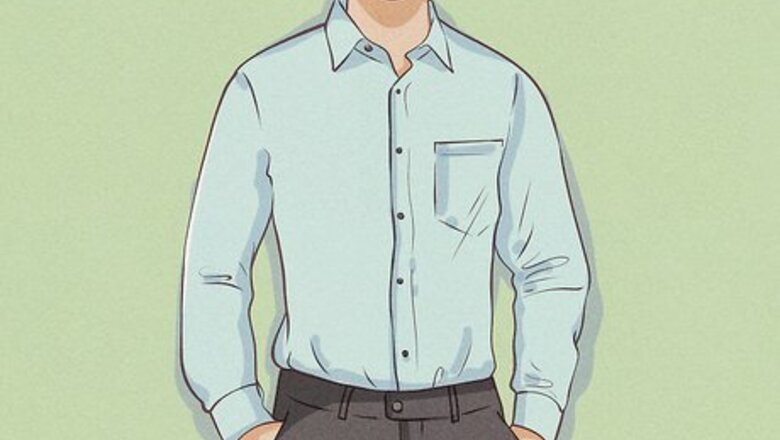
views
Picking the Perfect Dress Shirt

Wear a dress shirt that is fitted to avoid bunching under your sweater. Make sure your dress shirt fits you well in the shoulders, sleeves, and waist. If it’s too big, you’ll have to deal with unflattering bunching under your sweater. So try it on before buying and make sure it’s not too baggy in those areas. If your dress shirt is too big, you can go to a tailor to get it altered, or aim for a slightly smaller size.
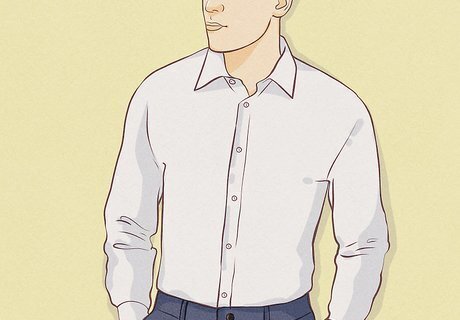
Choose a thin dress shirt if possible. When layering clothing, especially dress shirts, you want to look neat and crisp. Check to see if your dress shirt is made with broadcloth or poplin, and avoid thick fabrics like flannel and denim. If the dress shirt is made of a thick fabric, it may look unflattering and bunch up under the sweater.
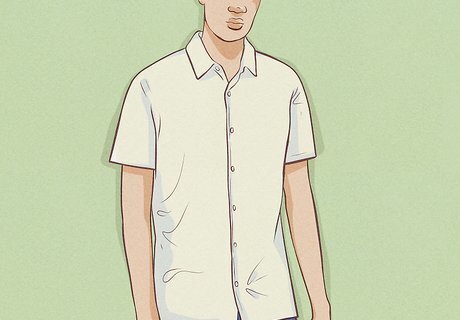
Select a short-sleeve button-up in warmer weather. Not only will a short-sleeve or sleeveless dress shirt look great under a sweater – it'll also keep you cool! By reducing the number of layers on your arms, you'll be cool outside or in. A short-sleeved or sleeveless dress shirt will also prevent lumps and bulkiness under your sweater sleeves. If you're nervous about trying this, remember that no one will notice that you’re wearing a short-sleeve dress shirt unless you take your sweater off.
Choosing a Sweater Style
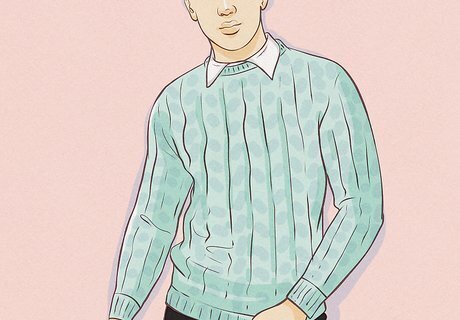
Maintain a professional look with a simple crew neck sweater. This timeless classic will serve you well in the conference room or the office – lending you true style without breaking the bank! Pair this look with some slacks or a pencil skirt for a style that screams "young professional." If the sweater collar is very tight and close to the neck, keep the dress shirt collar tucked inside of the sweater. Try a grey crew neck sweater with a light blue dress shirt underneath for a simple look.
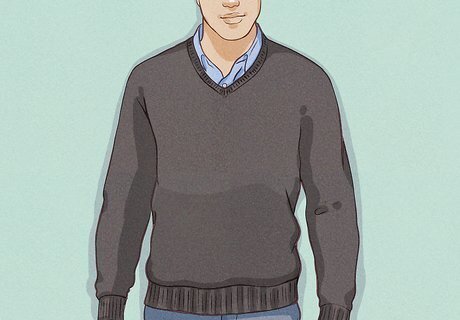
Wear a V-neck sweater to show off a tie. This is a classic professional look. Due to the triangular shape of the collar, they will frame your tie a little more neatly than a crew neck would. However, to pull this off, make sure it fits properly, since a too-tight sweater will bunch up around your tie, and a too-loose one will look sloppy. Your V-neck sweater should be cleaned and pressed. It is a more formal sweater, and will look best a little more stiff and free of wrinkles.
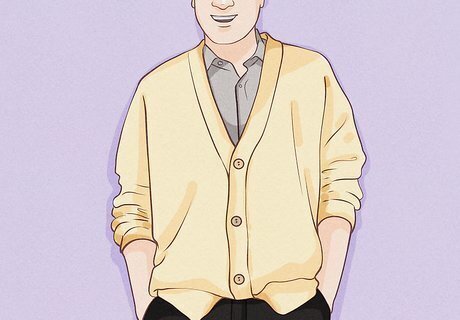
Choose a cardigan sweater for a business casual appearance. A cardigan sweater over a dress shirt is a great choice for nice get-togethers, casual workplaces, parties, and dates. Cardigan sweaters can be button-down, zippered, or open. You can vary the look of your cardigan by keeping it completely open, half open, or button/zip it up completely. It all depends on what makes you most comfortable. For example, try pairing a beige cardigan sweater over a simple gray dress shirt and black slacks. A cardigan is great if you're concerned you'll get too hot wearing a sweater all day, because you can easily take it off when you're warm and put it back on when you're cool.

Throw on a sweater vest over a dress shirt for an informal look. Sweater vests are another great option, and are very stylish if worn correctly. Make sure it is fitted, as a loose-fitting sweater vest may look frumpy. Liven up your sweater vest with fun colors and patterns. Finish your look by rolling up your dress shirtsleeves.
Matching Colors and Patterns
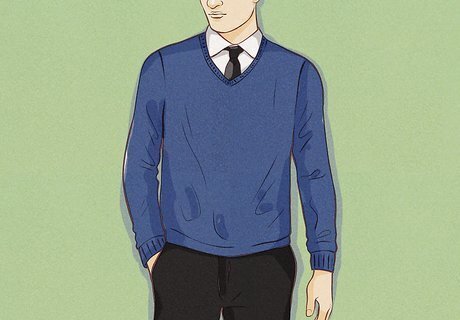
Wear neutral shades for a conservative look. These shades are a great way to show your professional side. For a complete look, choose neutral shades for your shirt, sweater, and even a tie. Some neutral shades include black, grey, brown, navy, white, and khaki. For example, wear a navy sweater with a white dress shirt and a black tie. Though neutral shades do pair well together, avoid wearing the same shade in multiple items (for instance: a tan dress shirt and a tan tie) since that may look monotone.
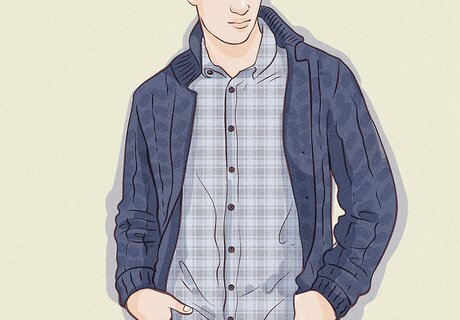
Mix solid colors with patterns to show off your personality. Interesting patterning will make your outfit more fun. For example, try a patterned sweater with a solid shirt, or the other way around. You can also choose a solid colored sweater and shirt with a patterned tie. For instance, you might wear a casual plaid button-down with a chunky wool sweater for a rugged, outdoorsy look. Avoid wearing too many different patterns in one outfit. This makes it difficult for the eyes to follow, and it creates unpleasant contrasts.
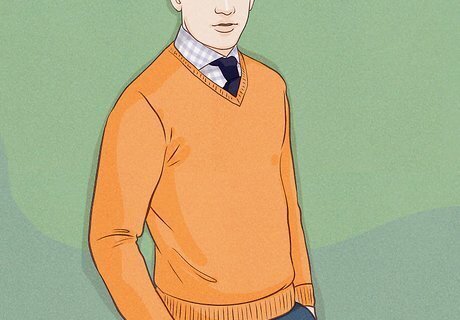
Opt for a tonal outfit for a powerful look that demands attention. A tonal outfit is one that utilizes the same color for each piece. When choosing to wear a tonal outfit, make sure you choose a color that compliments your skin tone. Tan and navy blue are great color options, as they are both considered to be safe and strong. For example, wear a navy blue dress shirt with a navy blue tie and sweater. Play with textures and patterns when planning a tonal outfit. Your sweater and dress shirt should be different textures in order to add depth. You can also experiment with different shirt patterns in the same color to make your tonal outfit more interesting.
Completing Your Outfit
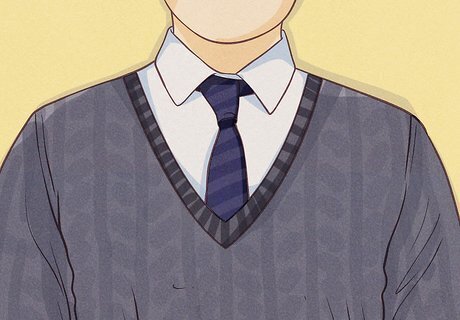
Wear a tie for a more professional look. Not only do ties help you fit in at professional gatherings; they are also a great way to show off your style and personality. Choose a bold color or fun pattern to make a statement! However, make sure it is tied neatly and tucked under your sweater, so you look sleek and professional. If possible, wear a thin tie to avoid bulkiness under your sweater.
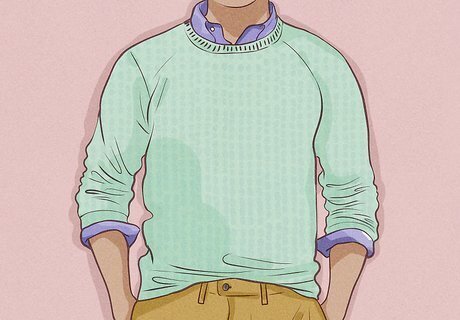
Roll up the sleeves for a casual appearance. To do this, unbutton the cuff, fold it back, and then roll it at least one more time. This way, your sleeve rolling will look intentional and not sloppy. Make sure you have several inches of your wrist showing, or it will look like your shirtsleeves were too long. Don’t roll your sleeves up past your elbows unless you’re going to be working.
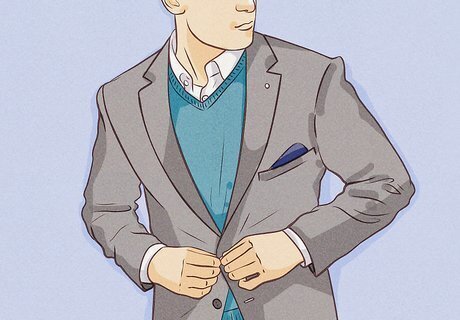
Add an additional layer with a blazer or coat. This is a great professional look, especially when the weather is a little chillier. You will look well put together if you choose the right color combination. For example, a white dress shirt with a navy blue sweater and a grey blazer gives excellent contrast. If a third layer seems too restricting, opt for short sleeve shirt or sweater vest under your blazer.
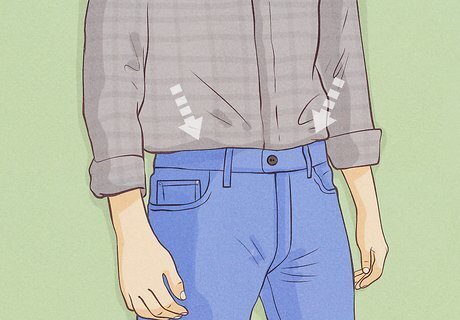
Tuck your shirt in if you’re looking to impress. If you’re going on an interview, a date, or just going to work, make sure you tuck your dress shirt into your pants. If you let your shirt flaps hang out under your sweater, it can look a bit sloppy. If you are going for a casual look, it’s okay to leave your shirt untucked, but keep in mind the setting you’re going in to. Make sure your tucking is neat, so you don’t have any lumps in your pants. If needed, use shirt garters to keep your shirt neatly tucked in all day. Never tuck your sweater into your pants.















Comments
0 comment